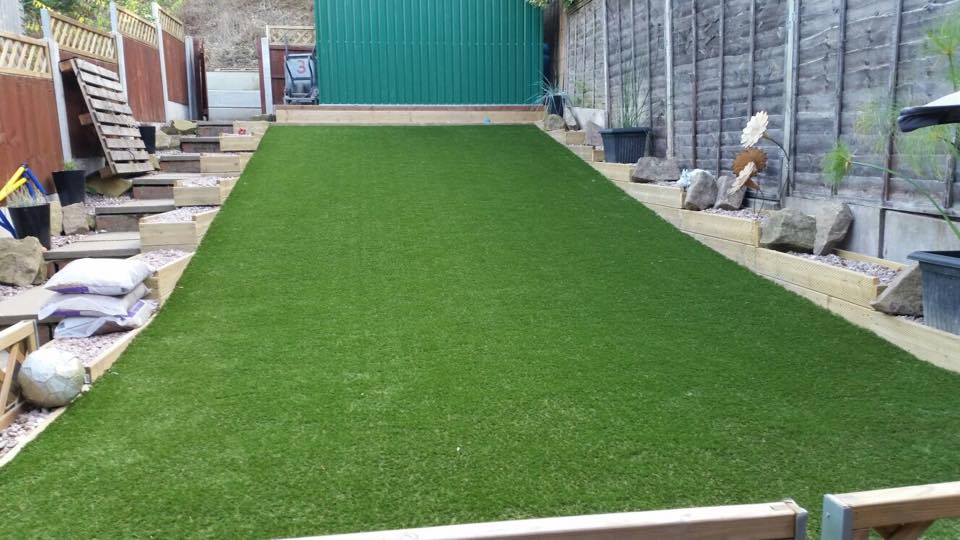Ways To Install Artificial Grass On Uneven Surface In Spring Valley

- The first step in any artificial grass installation is to create a smooth and even base. This typically involves removing any existing grass or debris and then leveling the ground. For minor unevenness, a garden rake or a flat-headed shovel can be used to even out the area. For more severe irregularities, a combination of filling with a suitable base material such as sharp sand or crushed stone and compacting is necessary. The aim is to achieve a gradient for drainage while ensuring a flat surface for the artificial turf.
- For areas with slight inconsistencies, laying a shock pad underlay before installing the artificial grass can be an excellent solution. Shock pads are essentially cushioning layers that not only help to smooth out minor bumps but also provide added comfort and safety to the surface. They are particularly beneficial in play areas or sports fields where the ground may not be perfectly flat.
- For areas with more significant undulations, installing a solid sub-base is crucial. This typically involves applying a layer of MOT Type 1 aggregate and compacting it with a vibrating plate compactor. A sub-base will provide a sturdy foundation for the artificial turf, ensuring that the surface above remains even over time, despite any movements in the ground beneath.
- After leveling the ground but before laying the artificial grass, it is advisable to install a weed membrane. This layer serves two purposes: it prevents weeds from growing through the turf, and it helps to stabilize the ground beneath. The weed membrane should be laid over the compacted base material and secured before the turf is rolled out.
- One of the challenges of installing artificial grass on an uneven surface is ensuring proper drainage. This can be achieved by having a slight slope to allow water runoff and using a permeable base material. Ensuring that the edges of the artificial turf are well-sealed and that there are no dips where water can collect will help prevent waterlogging and maintain the longevity of the turf.
FAQs
Can Artificial Grass Be Laid Directly On Soil?
Yes, artificial grass can be laid directly on soil, but it’s not advisable without proper preparation. The soil needs to be leveled, compacted, and a proper drainage system should be put in place to avoid issues with water pooling and uneven settling.
How Do You Secure Artificial Grass On An Uneven Surface?
Artificial grass can be secured on an uneven surface by using ground pins or nails around the perimeter and seams of the grass. Joining tape and adhesive can also be used to secure the seams.
How Long Does Artificial Grass Last On An Uneven Surface?
The lifespan of artificial grass on an uneven surface can be similar to that on a flat surface if installed correctly—typically between 8 to 15 years. Proper ground preparation and maintenance are key to longevity.
Conclusion
Installing artificial grass on an uneven surface requires meticulous ground preparation, the right materials, and careful execution. By leveling the ground, using shock pads, installing a sturdy sub-base, applying a weed membrane, and ensuring proper drainage, the installation can be as successful and durable as on any even surface. With these steps, homeowners and landscapers can enjoy a beautiful, low-maintenance green space regardless of the underlying terrain. For more information, contact Artificial Grass Spring Valley at (619) 304-0080.